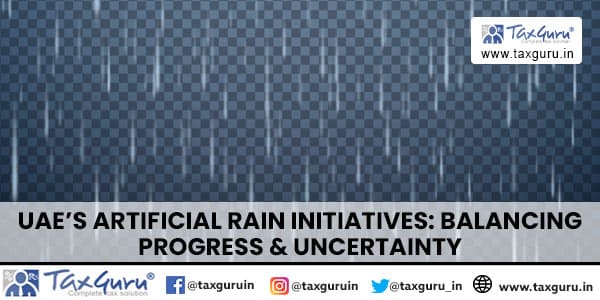Artificial rain, also known as cloud seeding, refers to the deliberate modification of weather conditions by scientists. This process is typically carried out in regions where natural rainfall is scarce or infrequent. The primary objective is to address water scarcity, enhance agricultural productivity, and increase overall water availability. However, altering weather patterns through artificial means can have unforeseen consequences, including unpredictable storms and rainfall.
Page Contents
The Process of Artificial Rain
At its core, artificial rain involves inducing clouds to release water over specific areas at desired times. Scientists employ various methods, often rooted in chemistry, to achieve this goal. Here are the key aspects of the process:
- Cloud Seeding: Cloud seeding is the central technique used in artificial rain projects. It involves dispersing various chemical materials into existing clouds. These materials act as nuclei around which water droplets condense, eventually forming raindrops. It’s essential to recognize that clouds are not pre-made entities; they consist of water vapor, fog, or mist lifted from the Earth’s surface by sunlight.
- Targeted Areas: Artificial rain is strategically applied to regions suffering from water scarcity. For instance, consider the United Arab Emirates (UAE), where water resources are limited. In such arid environments, artificial rain projects hold immense importance for sustaining agriculture, replenishing groundwater, and supporting human settlements.
Benefits of Artificial Rain
- Water Supply: By enhancing rainfall, artificial rain contributes to increased water availability. This is crucial for both domestic use and agricultural irrigation.
- Land Fertility: Cultivating drought-prone land becomes feasible when artificial rain supplements natural precipitation. Improved soil moisture levels lead to better crop yields and increased fertility.
- Economic Impact: A reliable water supply positively impacts the economy. Agriculture thrives, and industries have access to sufficient water for production processes.

Risks and Unintended Consequences
- Unpredictable Weather: Altering natural weather patterns can lead to unexpected outcomes. While the intention is to bring rain, there’s no guarantee that it will occur precisely as desired. Unforeseen storms or excessive rainfall can disrupt ecosystems and infrastructure.
- Environmental Uncertainty: Our understanding of environmental dynamics remains limited. When implementing artificial rain projects, we must weigh short-term benefits against long-term consequences. Manipulating weather systems may have far-reaching effects on local ecosystems and climate.
- Economic Uncertainty: The UAE’s economy, heavily reliant on oil and gas, faces uncertainty due to artificial rain efforts. While increased water availability benefits agriculture, it also introduces risks. Balancing economic gains with potential disruptions is challenging.
Conclusion
Artificial rain projects offer hope for water-scarce regions, but they come with inherent risks. As we strive to address water shortages, we must tread carefully. Scientific advancements should be accompanied by thorough environmental impact assessments. The UAE’s experience underscores the need for responsible decision-making—considering both short-term gains and long-term sustainability. Only then can we harness the benefits of artificial rain without compromising our delicate ecosystems and economies.




